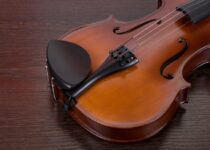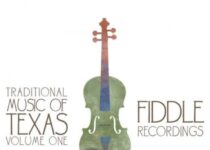Comprehensive Guide on Fiddles Throughout History

The fiddle is an instrument that has played an important role in many cultures’ music throughout history. From the early days of classical music to today’s modern styles, the fiddle has been used in a variety of musical settings. Read on to learn more about the instrument’s origins, types, and styles.
Bengali meaning of “fiddle”
A fiddle, a bow-stringed musical instrument with a bow, can be found in many genres: classical to rock to jazz and classical. While the fiddle is not without its faults, it has many appealing qualities. But the best part about the instrument? The ability to play with passion. The fiddle has spawned a host of aficionados and neophytes who are happy to learn the ropes. This article will examine the fiddle in the context of the local lexicon and offer up a few tips and tricks for navigating this tangled web. It also provides a list of must-have ingredients.
It wasn’t a rare occurrence to find the fiddle. During the Highlands, Scottish immigrants brought the genre to the shores of North America. The name refers to the fusion of European classical music and British folk music.
The fiddle’s origins
There are many different versions of the origins of the fiddle. One theory is that the medieval lute (lira) was the precursor to the modern fiddle. Another theory is that the modern violin, also referred to as a fiddle, is a variation of the Middle Eastern rebab.
The fiddle is not a single instrument, however it can be described as a bow-stringed instrument that has a neck. You can play it with either a plectrum or a bow. It is also used to accompany a lively dance.
The earliest fiddles were made of gut strings, and were sold through mail order. They could accompany slow ballads or dance music. They were portable, and made it easy for beginners to learn how to play.
Early American settlers brought fiddles with them on their trek west. The settlers adapted their playing to the new tunes and changed the title of the tunes in order to fit their country.
Fiddles in traditional (folks) designs
Traditional (folk) styles of violin include the English, Irish, Scottish, and North American fiddle traditions. Each tradition has its own unique sound. Each style has its own distinct set of fingering techniques and ornamentation.
The Scottish fiddle style is influenced by the Great Highland Bagpipe, while the Scottish and North American fiddles are influenced by the baroque violin technique. The East Coast fiddle style is influenced by classical music and is often played in unison.
Fiddle players are musicians who play the fiddle and also improvise. He or she may play fast, slow, or use a variety of bow techniques. They may be accompanied by drums, guitar, or mandolin. You can even have them accompanied with an electronic keyboard, or mountain dulcimer.
The Scottish fiddle style often uses double stops. Many East Coast fiddle styles use difficult keys. There are many bowing methods, such as triplets or birls.
American fiddle songs that are well-known
American folk music includes fiddle tunes. Historically, they trace back to the early days of colonization of North America. Popular European dance styles like quadrille or waltz brought new music to America.
Fiddle tunes were originally intended for dancing but were later adapted to many other situations. Many were also used for non-dancing purposes. For example, a fiddle tune could be used as accompaniment to a funeral. The instrument also played an important part in early American settlers’ lives.
A few common fiddle tunes in the United States originated with African-American fiddlers. They often traveled to the west to perform for settler families and were warmly received.
Classical violins and traditional fiddles
Both traditional and classical violins offer distinct benefits and drawbacks. However, it would be inaccurate to say that one is better than the other. The overall experience of listening to music will improve, regardless of any differences.
Each generation brings new innovation to the violin’s predecessor. The history of the violin is long. Improvisation is a great example of this. This is why violinists often use several instruments to enhance their sound.
Classical violins are more likely to be accompanied by other string instruments. A violin can also accompany jazz and folkloric music. There are many types of violins: quintons and hardanger fiddles as well as the ubiquitous viola.
Wooden violins with hollow bodies are the best. These are more durable, and the string quality is excellent. They also offer a cleaner sound when amplified. https://www.youtube.com/embed/VQ60snDBO0E


